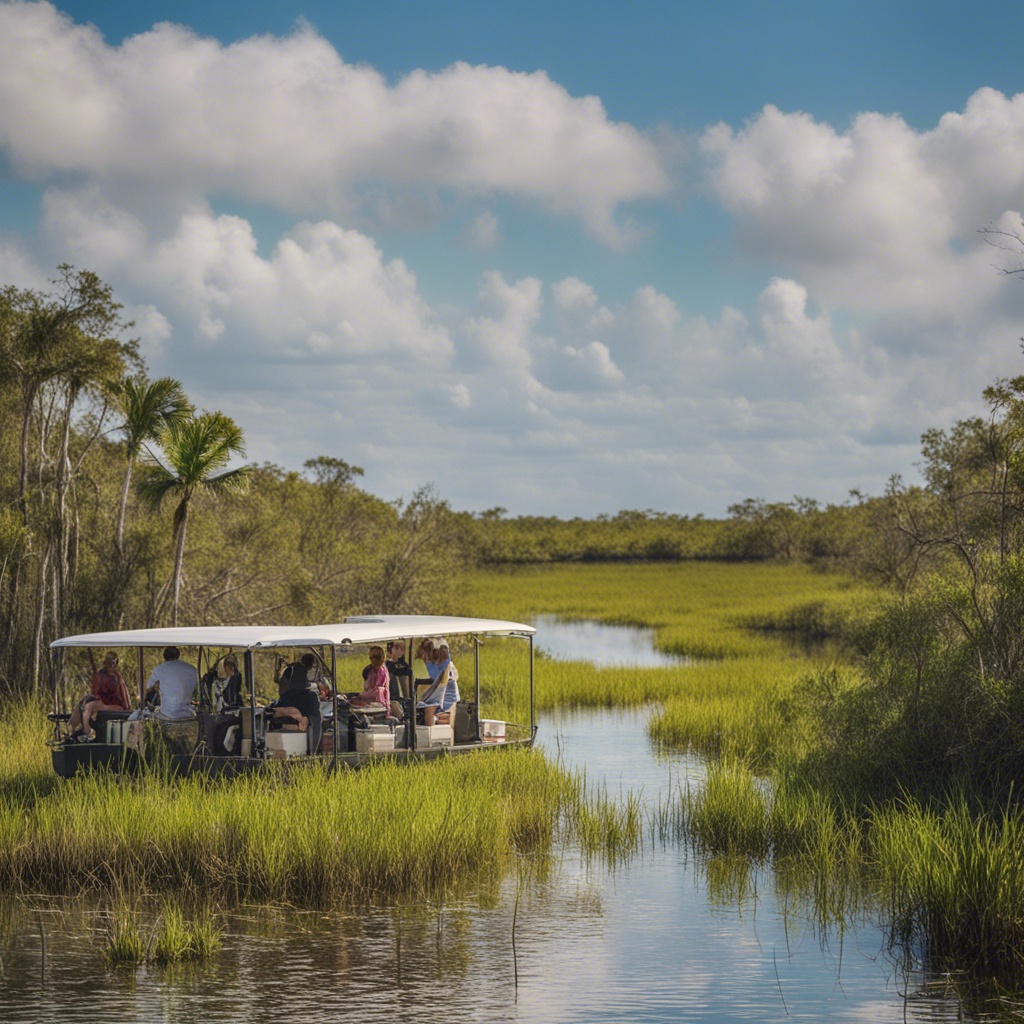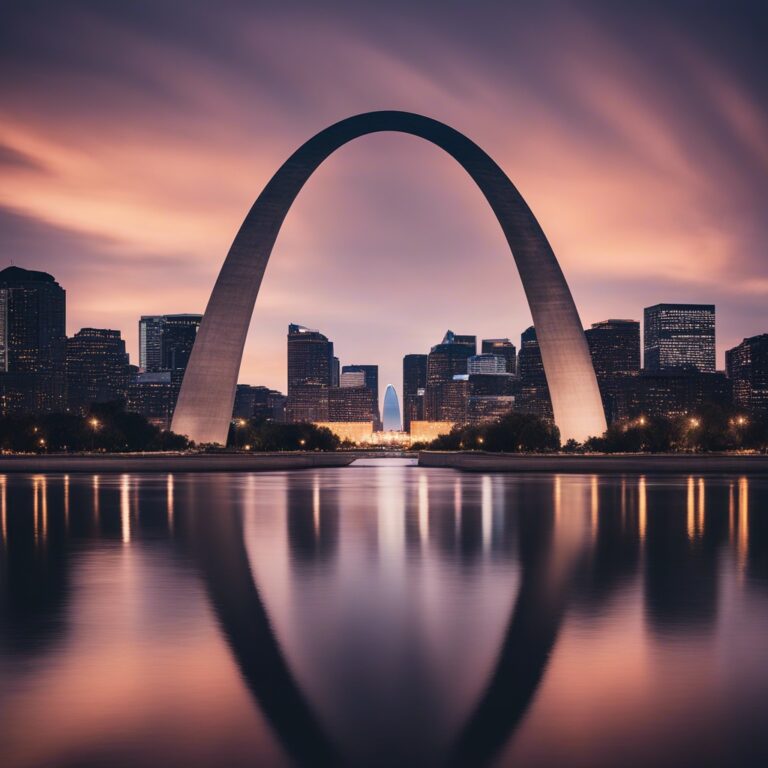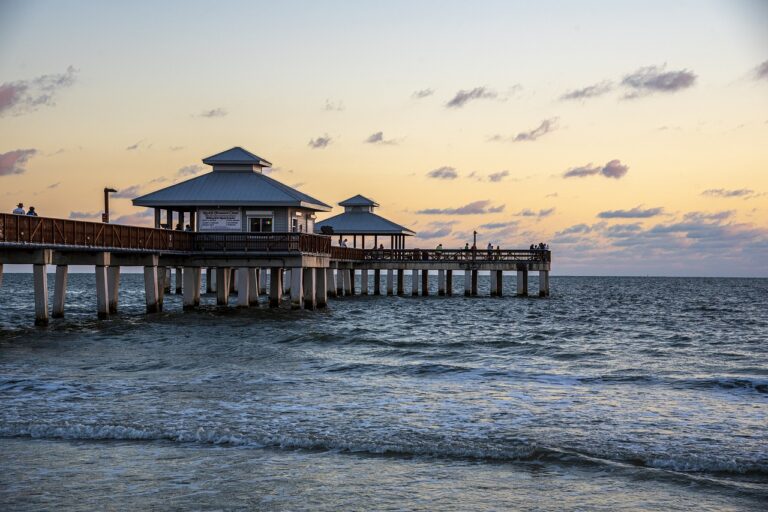Everglades National Park: A Comprehensive Guide for Adults, Couples & Families
Imagine a land of sun-drenched savannahs, towering cypress trees, and guitar-strumming alligators – welcome to Florida’s most defining wilderness! Everglades National Park, a unique landscape that is often referred to as a “River of Grass” is an iconic gem in the country’s national park system. This subtropical wilderness is famous worldwide for its unparalleled beauty, teeming with wildlife, and history as rich as the peat soil that feeds the ecosystem. Dive in as we explore what makes this national park a must-visit. Get ready to uncover its fun history, unique places to stay nearby, some unusual activities you can try, great places to eat, and practical information about bringing pets. We’ll even propose a 5 day itinerary tailored for adults, couples, and families with kids to help you plan the perfect Everglades sojourn.
What is Everglades National Park Famous For?
Everglades National Park is renowned around the world for its unrivalled natural beauty. As the largest tropical wilderness in the United States and a UNESCO World Heritage Site, it goes without saying that it is famous for its impressive biodiversity and unique ecosystems, which are unlike any other on the planet. But what makes it truly stand out?
- Unparalleled Biodiversity: The park is home to myriad species, many of which are endangered or threatened, such as the Florida panther and the West Indian manatee.
- Unique Ecosystems: From marshes to mangrove forests, pine uplands to coastal lowlands, Everglades National Park harbors a plethora of diverse habitats that collectively support an abundance of wildlife.
- River of Grass: The park is often referred to as the “River of Grass” due to its slow-moving waterways and lush sawgrass prairies. This water system is incredibly unique and lends the landscape its distinctive feel.
- Important Birding Area: Everglades is a birder’s paradise with over 360 bird species, including the vibrant pink spoonbill and the iconic bald eagle.
- Outdoor Recreations: The park is a haven for outdoor enthusiasts, offering activities like hiking, biking, camping, fishing, boating, and wildlife viewing.
In addition to these natural wonders, Everglades National Park is also renowned for its cultural significance. It’s a site steeped in rich Native American history, with archeological treasures like the Ten Thousand Islands and the Miami Circle adding to its allure. From its fascinating history to its vibrant ecosystems, Everglades National Park truly offers an unforgettable experience for everyone.
The Everglades: A Unique Ecosystem
The Everglades is often referred to as a ‘River of Grass’, a unique landscape dominated by sawgrass marshes, mangrove forests, and hardwood hammocks. Yet this is not just aesthetically pleasing scenery. The Everglades is a water-driven ecosystem—the largest sub-tropical wilderness in the United States—supporting an immense diversity of flora and fauna.
The Biotic Communities:
- Sawgrass Marshes: Don’t be fooled by the seemingly infinite expanses of sawgrass. Underneath lies a slow-moving, shallow river teeming with life.
- Mangrove Forests: These tidal forests are the lifeblood of the marine ecosystem due to the rich nutrients they offer. They also provide physical buffer against hurricanes and absorb CO2, helping in the fight against global warming.
- Hardwood Hammocks: These dense stands of trees and shrubs form little islands in the sawgrass marsh. They provide a haven for species intolerant of the typically wet grounds of the Everglades.
The Everglades is a delicate balance, where slight variations in water depth, quality, and timing can drastically alter the landscape and its inhabitants. It’s this delicate balance that the National Park strives to protect.
As much as the Everglades is about water, it is about the life that water supports. This ‘river’ supports an incredible variety of wildlife, some of which are rare and endangered.
The Wildlife:
- Alligators and Crocodiles: Everglades is the only place in the world where both alligators and crocodiles coexist. The freshwaters of the interior marshes and mangrove swamps are the perfect habitat for these ancient reptiles.
- Manatees: These gentle sea cows are found in the warm, sea-grass laden coastal waters. They are a delightful sight for boat-goers.
- Panthers: The Florida panther is one of the most endangered mammals on earth, with the Everglades providing one of its last remaining habitats.
- Birds: The Everglades is a paradise for bird-watchers. Over 300 species of birds including herons, egrets, and iconic flamingos can be spotted.
Visiting the Everglades means stepping into a vibrant world where water and land merge, creating a haven for a diverse collection of living organisms. Whether by foot, bike, kayak, or airboat, you are sure to encounter the unique life that populates this extraordinary wilderness.
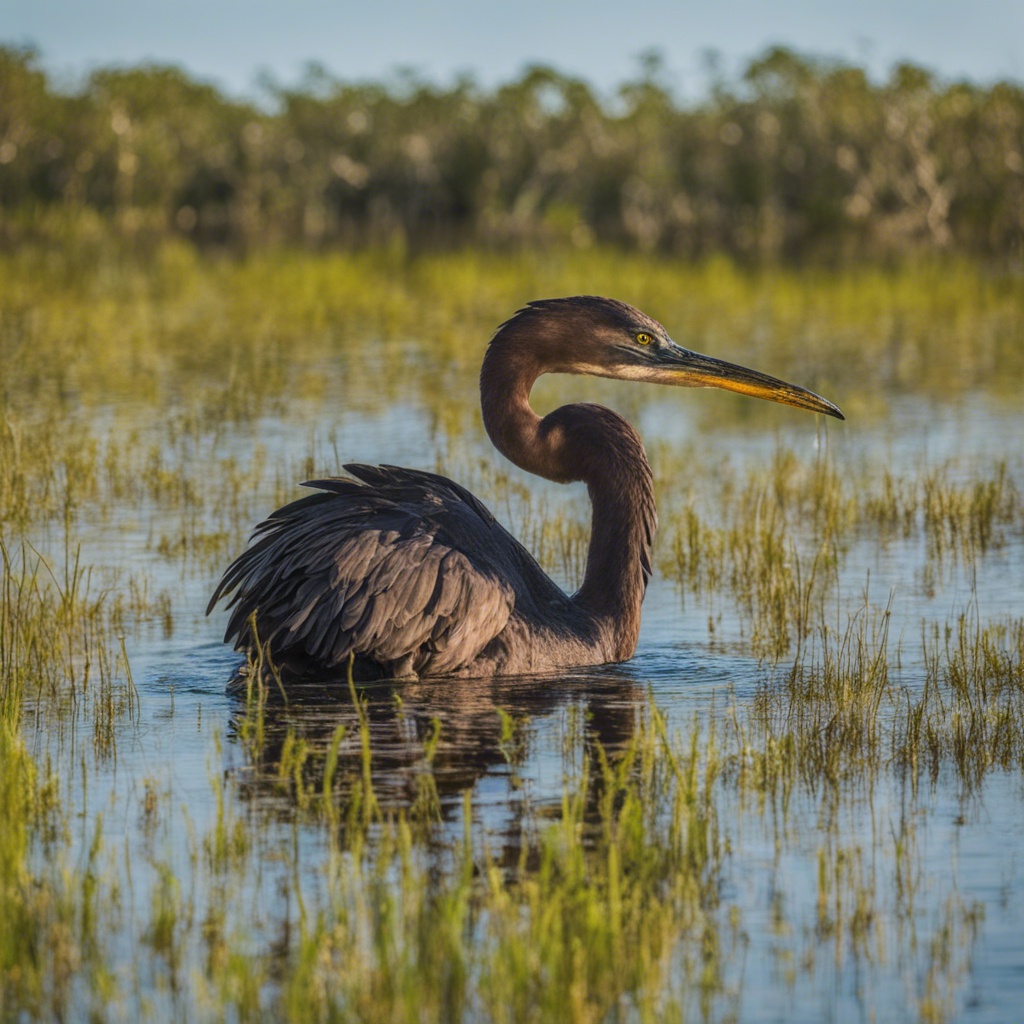
The Abundance of Wildlife in Everglades National Park
Everglade’s National Park shares its home with a remarkable array of wildlife. This park stands as one of the most biologically diverse areas in North America. From underwater creatures to birds soaring in the sky, prepare to be mesmerized by nature’s miraculous creations.
With plentiful opportunities for wildlife viewing, you’ll experience the serenity of observing creatures in their natural environment. So, steady your binoculars, and let’s explore some of the park’s residents.
Alligators vs Crocodiles
When you think of the Everglades, you may first picture the iconic alligator. Yet, this park offers a rare opportunity to see both American alligators and American crocodiles in the same environment. The difference? Alligators have a wide, rounded snout, and crocodiles feature a pointed, V-shaped snout.
Feathers and Beaks: Bird Watching Extravaganza
For bird watchers, the Everglades is a paradise. It’s home to an astounding 360 bird species. Spot the colorful purple gallinule, large wading herons, and the hammerhead stork. You might even see the rare snail kite or a roseate spoonbill in your excursion.
Under the Water: A Marine Life Hub
Beneath the Everglades’ waters, you’ll find manatees, dolphins, all kinds of fish, and even some sea turtles. Don’t miss a chance to see the slow-moving, gentle giant – the iconic Florida manatee.
On Land: Rare Mammals and Reptiles
The Everglades is the only place in the world where the endangered Florida panther roams free. The sleek and agile bobcat is another gorgeous sight to catch. You might also encounter otters scampering in the wetlands, white-tailed deer grazing, or marsh rabbits hopping around.
Reptile enthusiasts will inevitably fall in love with the array of snakes, turtles, and lizards living in the park. You could easily spot an Atlantic loggerhead turtle, an Eastern diamondback rattlesnake, or the unique Florida softshell turtle.
Finding yourself in the grand presence of these magnificent creatures can be, without question, an unforgettable experience. The Everglades teems with life and serves as a brilliant reminder of the splendor and wonder of the natural world.
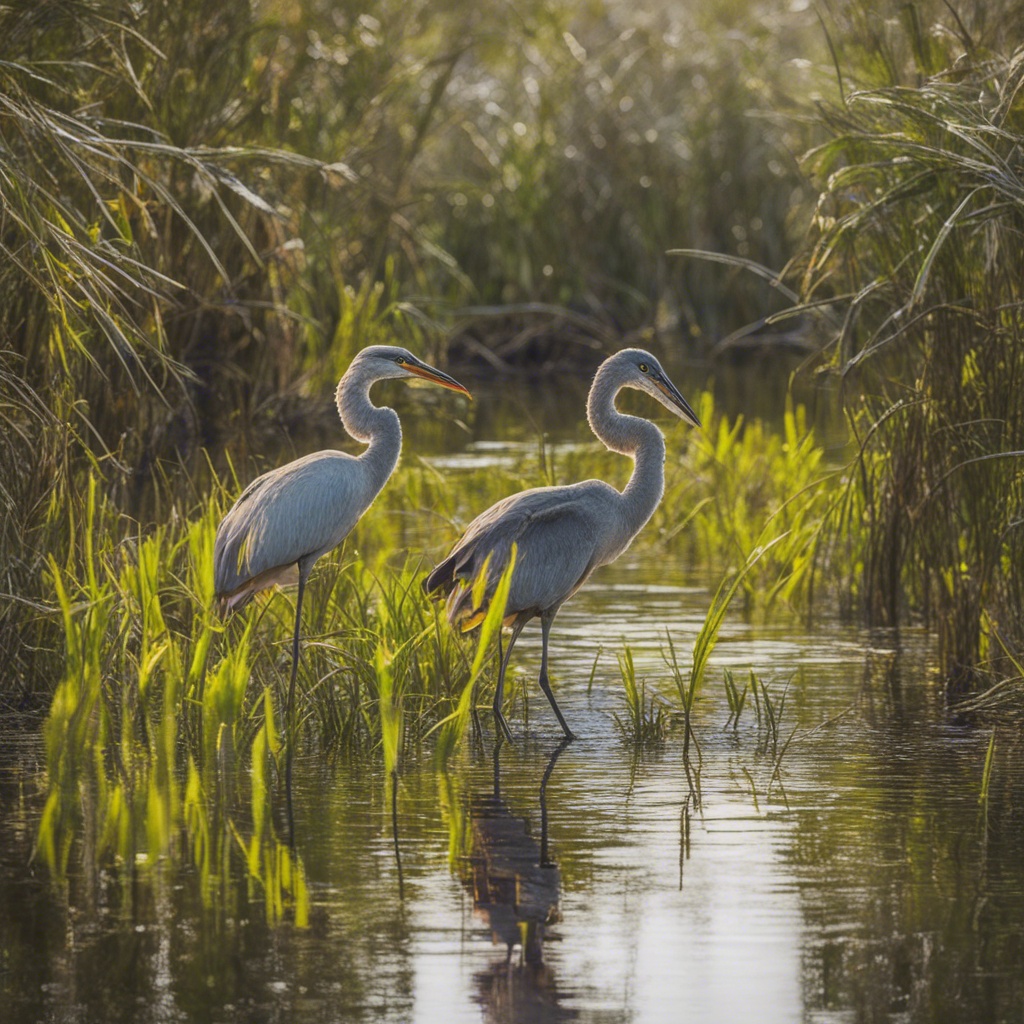
The Importance of Preserving the Everglades
The Everglades National Park is not merely a tourist destination. It represents a sensitive and unique ecosystem that supports a myriad of wildlife and vegetation. Beyond its role as a sanctuary for diverse wildlife, it also serves as a natural filter, replenishing our water resources. The importance of its preservation is immeasurable and extends to the global ecological balance.
The park is constantly under threat from various factors such as urban development, climate change, and pollution. The intrusion of non-native plant and animal species present a significant challenge to the natural balance of the park. This non-native invasion subtly, yet undeniably, influences the habitat, threatening the survival of native species.
- Urban Development: The growing urbanization near the Everglades poses a threat to this delicate ecosystem. Increased human activity can interrupt the wildlife, and the additional demand for water can disrupt the natural water flow.
- Climate Change: Rising temperatures can lead to sea levels rising which threaten the park’s marine habitats. Extreme weather conditions can also alter the landscape and negatively impact the park’s wildlife.
- Pollution: Industrial and agricultural run-off can introduce pollutants into the park’s water systems, leading to adverse effects on wildlife and plant species.
- Invasive species: Non-native plant and animal species compete with native species for resources and habitat, threatening the delicate balance of the ecosystem.
As a community, we have a responsibility to ensure that such a unique environment is preserved, not only for our enjoyment but for generations to come. Various conservation efforts are now focusing on the park’s preservation, including water flow improvement projects, invasive species control, fire management, and habitat restoration work.
Note: When visiting the Everglades National Park, remember to respect its ecosystems, wildlife, and natural beauty. Practice responsible tourism by following “Leave No Trace” principles, such as disposing of waste properly, staying on trails, and not feeding or disturbing wildlife.
Fun History of Everglades National Park
Everglades National Park, steeped in rich history, unfolded through several significant milestones. Despite its reputation as a natural haven for wildlife, the park’s historical journey is equally fascinating.
Lovingly referred to as ‘River of Grass’, the Everglades once spanned a vast area from Lake Okeechobee to Florida Bay. This region was inhabited first by indigenous tribes such as the Calusa and later, the Seminole people. These tribes thrived in the wild, unruly terrain of the Everglades, becoming expert fishers, hunters, and farmers.
Renowned explorer Ponce de Leon, in his hunt for the mythical Fountain of Youth, stumbled upon this unique wilderness in the early 16th century. Throughout the 18th and 19th centuries, this vast wilderness was probed for its bounty of timber, animals, and plants.
Causing significant harm, systematic drainage plans were put into action in the late 19th century for agricultural and developmental purposes. Thanks to the tireless efforts of multiple activists and conservationists, including Marjory Stoneman Douglas, these plans were halted and the narrative around the Everglades began to change.
From being perceived as a hazardous swamp, the Everglades transformed into an essential part of Florida’s delicate ecosystem. In 1934, through the efforts of landscape architect Ernest F. Coe and others, the park was envisaged to protect this unique environment. However, it was only in 1947 that Everglades National Park was eventually established, making it the first park created to protect a fragile ecosystem.
After achieving National Park status, the park has faced ongoing threats due to drainage and encroaching urban development. It went through a significant restoration plan in the late 20th century, known as the Comprehensive Everglades Restoration Plan (CERP).
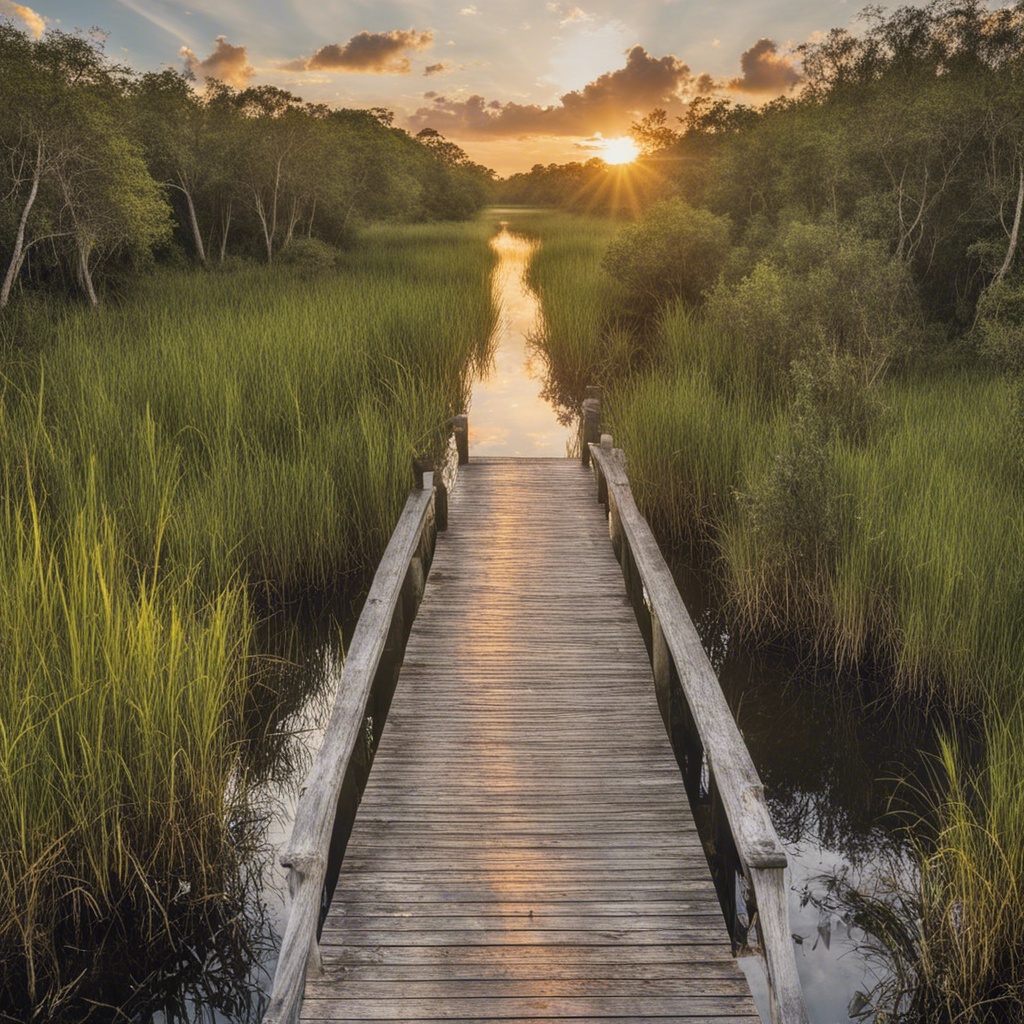
A UNESCO World Heritage Site
In 1979, the ways the park exemplified harmony between human interaction and nature earned it a prestigious spot on the UNESCO World Heritage Site list. Then in 1987, it was classified as an Important Bird Area, due to the over 300 species of birds that call the park home. It wasn’t just bird-life that led to accolades; the park also received a Wetland of International Importance title thanks to the Ramsar Convention.
In essence, the history of Everglades National Park echoes the story of conservation and the ongoing battle to protect our natural treasures. Today, the park stands as a potent symbol of man’s commitment to preserving and co-existing with nature.
Unique Places to Stay Near Everglades National Park
After a long day of exploring the majestic beauty of the Everglades, you would want to lay your head somewhere where comfort meets convenience. Thankfully, there’s a variety of unique accommodations within a short drive from the park’s entrance – perfect for refreshing, resting, and gearing up for another day in the wilderness.
The Everglades International Hostel
For adventure-seekers who appreciate a rustic, communal experience, the Everglades International Hostel offers a unique and budget-friendly option. This eco-hostel provides numerous accommodations, such as dormitory-style sleeping arrangements, private rooms, and a campsite complete with fire pits. What’s more, they offer guided tours, canoe rentals, and serve as an excellent base for exploring the surrounding wetlands.
The Ivey House
The Ivey House – A whimsical eco-lodge in Everglades City, offers a mix of accommodations that include both shared and private rooms. Relax by their enclosed, heated swimming pool, enjoy a hearty breakfast before heading out to the park, or rent a bicycle for a local adventure. It’s not just a place to crash, but a hub for the naturalist at heart.
10,000 Islands National Wildlife Refuge Chokoloskee Island Park
If visiting the park with a trailer or RV, consider staying at the Chokoloskee Island Park in the 10,000 Islands National Wildlife Refuge. This campground features hookups for both water and electricity and offers easy access to countless acres of wilderness. Plus, the park’s perfect position offers stunning views of the Gulf of Mexico – a fantastic spot for glorious sunsets.
Glades Haven Cozy Cabins
Craving solitude and a tranquil environment? The charming Glades Haven Cozy Cabins in Everglades City is a great bet. These adorable cabins come fully equipped with kitchens, offer amazing waterfront views, and supply guests with private docks for personal boats. It’s a slice of Floridian paradise that lets you get away from it all.
No matter where you stay, you’re just minutes away from the wonders of the Everglades. Make sure to book ahead, especially during the popular winter months when snowbirds from the north flock to South Florida’s warmer climes.
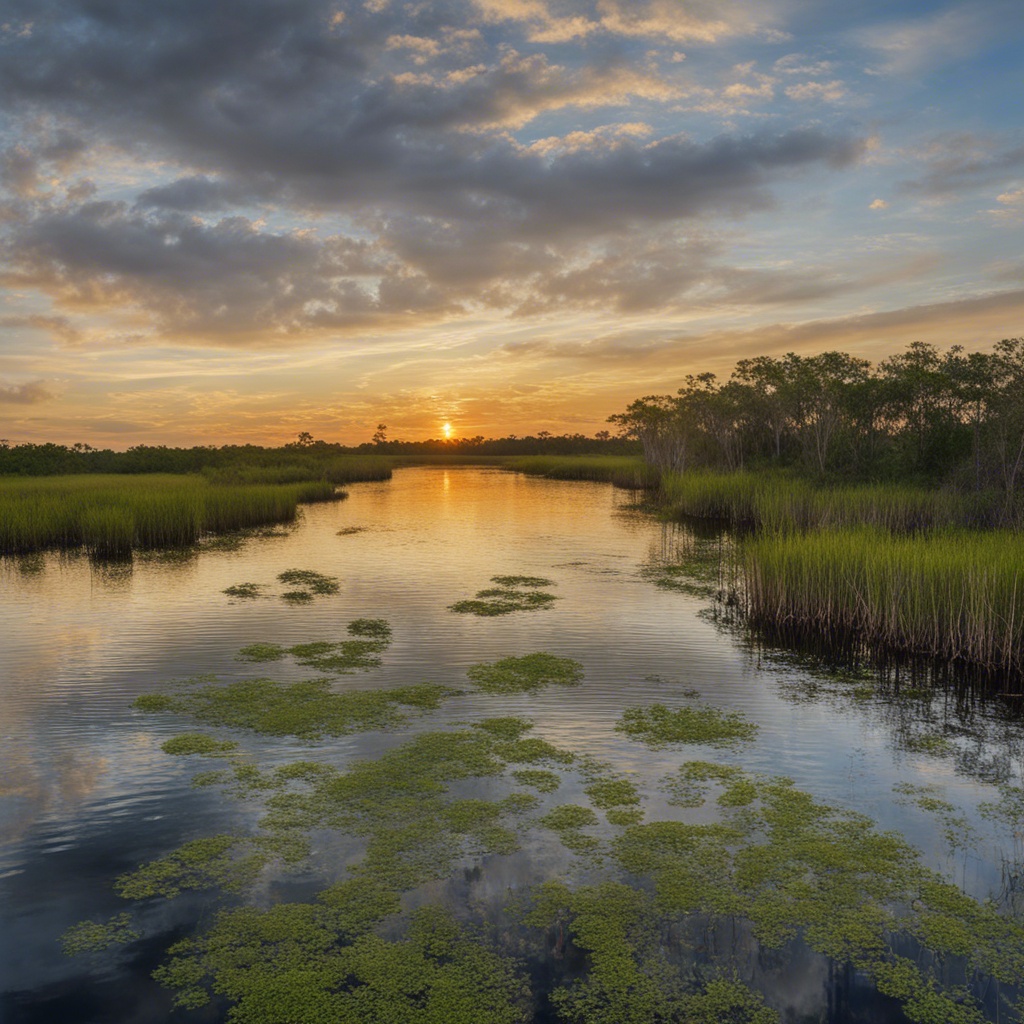
Luxury Resorts and Hotels in the Everglades Area
If you’re looking for an upscale, refined experience, there’s no shortage of luxury resorts and hotels within a short distance of the Everglades National Park. Here are some options if you’re planning on pampering yourself during your visit. The Biltmore Hotel
Nestled amongst sprawling, manicured gardens, the historic Biltmore Hotel is a sight to behold. Known for its Mediterranean architecture and classic, opulent interior design, it’s the epitome of luxury. Guests can enjoy extensive amenities, including a world-class golf course, a fitness center, and a signature spa. JW Marriott Miami Turnberry Resort & Spa
A tropical paradise replete with luxury, the JW Marriott Miami Turnberry Resort & Spa offers guests an exclusive experience. The rooms are spacious and beautifully decorated, and the resort boasts exceptional restaurants, a golf course, and the famed Tidal Cove Waterpark. Not to mention, its proximity to the park makes it an excellent choice. The Ritz-Carlton Coconut Grove, Miami
For those wanting to enjoy the city vibes alongside their nature-filled vacation, The Ritz-Carlton Coconut Grove offers the perfect solution. The renowned luxury chain provides an elegant retreat with artistic elements and refined dining. Enjoy the opulent rooms, elaborate spa, and panoramic city views before venturing into the Everglades for a day of exploration. The Setai, Miami Beach
The Setai, positioned in Miami Beach, offers a unique blend of style, elegance, and beachside relaxation. This luxury resort provides direct access to the beach, a spa, three infinity pools, and exceptional dining options. It’s the perfect place to unwind after a long day exploring the richness of the Everglades.
Remember, while these luxury resorts promise an extravagant stay, the real luxury is the unforgettable experience and amazing wildlife adventures that the Everglades National Park delivers!
Cozy Cabins and Cottages for a Rustic Experience
If you are a traveler who cherishes the feeling of being at one with nature, you will fall in love with the charming cabins and cottages near Everglades National Park. These accommodations provide a cozy, rustic feel while being conveniently situated for exploring the park’s unique biodiversity. Here are some top picks:
- River Lily Inn Bed and Breakfast: This quaint inn features unique tropical surroundings and offers cottage-like rooms that make for an ideal rustic retreat after a day exploring the park.
- Port of the Islands: This resort offers quaint cottages located on the edge of the Everglades, providing spectacular views and easy access to the national park. They also offer marina facilities and fishing experiences.
- Oyster House: At the heart of the Everglades City, Oyster House offers comfortable accommodation with fully equipped kitchenettes for a homey feel. You’ll feel like a local in no time.
When choosing your stay, it’s important to remember that the camaraderie built around a bonfire or the serenity experienced when observing wildlife right at your doorstep can only be enjoyed in these unique, cozy accommodations. These cabins and cottages, situated in the serene locale near the Everglades, offer a tranquil retreat from the fast-paced urban life, bringing you closer to nature in its rawest, yet beautiful form.
While you can expect basic amenities such as clean linen, hot water, and cooking facilities in most cabins and cottages, remember the objective is to maintain an authentic, rustic experience. Enjoy the simpler things life offers – the soothing sound of the cicadas at night, the aroma of freshly bloomed wildflowers, and the majestic sight of the Everglades under an open, starlit sky. This is not merely a stay, but a lifestyle that embraces the wonder of the Everglades.
Camping Adventures: Roughing It in the Wilderness
If you’re up for a real adventure, there’s no better way to dive into the wild heart of the Everglades than by camping. This is an excellent opportunity to truly experience the pristine wilderness and peaceful tranquillity of the park. But remember, camping in the Everglades is not for the faint-hearted. It requires preparation.
Camping is typically divided into two types: Front country camping and Back country camping. Front country camping includes drive-in campsites at Long Pine Key Campground and Flamingo Campground, both equipped with facilities like restrooms, cold showers, and picnic tables. These locations are perfect for families or first-time campers seeking a more comfortable camping experience.
Back country camping, on the other hand, is for those yearning for an adventurous experience in a more isolated setting. These sites are accessible only by boat or trail, spreading across the vast marshes, tropical hardwood hammocks, and stunning beachfronts. Effort to reach is rewarded with an unparalleled wilderness experience and sight of a spectacular star-strewn night sky. This mode of camping does demand skills in navigation and survival, and hence is recommended for more experienced campers.
Before setting up camp, it’s essential to remember that you’re sharing the environment with a vast range of wild creatures. Make sure to store food safely and keep a respectful distance from the wildlife. Remember, you are a visitor in their home. Visitors are also required to follow a ‘leave no trace’ policy, ensuring that this ecosystem remains preserved for future generations.
To ensure that everybody gets an opportunity, campgrounds are usually on a first-come, first-serve basis, with a duration limit especially during the busy winter season. Remember to check the park’s official website or speak with park rangers to confirm details related to camping permits, fees, and regulations.
Popular Camping Sites in Everglades National Park
1. Long Pine Key Campground: Surrounded by towering pine trees and home to several hiking trails. Here, it’s common to see a deer grazing or listen to the melodies of a variety of birds.
2. Flamingo Campground: Located on the shores of Florida Bay, with amenities like picnic tables and grills. Here, you might spot a crocodile basking in the sun!
3. Pine Island: This backcountry site has a beautiful beach, excellent for swimming and relaxing after a long day of exploration.
4. Chickee Sites: These elevated camping platforms out on the water offer a unique camping experience.
Whether you choose front country or backcountry, camping in the Everglades provides a unique chance to sleep under the stars, waking to the sounds of nature echoing across the landscape. It’s a time to detoxify from digital distractions and instill a sense of wonder and respect for the raw, captivating wilderness of the Everglades.
Airboat Tours: Glide Through the Mangroves and Marshes
If the Everglades were a city, airboats would be its taxis. Experience the thrill and excitement of an airboat ride as you skim across the shallow, gleaming waters surrounded by the sawgrass prairies of the Everglades. It’s an exhilarating way to see this unique landscape and the wildlife that lives here.
Airboat tours offer a different approach to exploring the Everglades by making inaccessible areas available for viewing. Exploring this diverse wetland ecosystem by airboat is an exciting, high-speed adventure that brings you face-to-face with Everglades nature at its finest.
Spend an hour or two speeding through boundless marshes, ducking under low-hanging greenery, and spotting wildlife from a safe distance. Everglades airboat tours often include a knowledgeable guide who can share fascinating tidbits about the park’s ecology, history, and the animals that reside there. It’s common to see alligators, wading birds, turtles, and maybe even a manatee if you’re lucky.
Besides the thrill of the ride and the abundance of wildlife to spot, you’re also bound to absorb some fascinating local stories, history, and geography from your guide. Most tours run, on average, between 45 minutes to an hour, but longer expeditions can be arranged.
Pro Tip: Make sure to bring a hat, sunglasses, sunscreen, and water to keep comfortable. Use binoculars for closer wildlife viewing. It might also get noisy, so consider getting ear protection for the airboat ride.
Here’s a list of our top recommendations:
- Captain Jack’s Airboat Tours: Based in Everglades City, Captain Jack’s offers a unique and personalized experience on their airboat tours, complete with alligator shows.
- Coopertown Airboats: Operating since 1945, Coopertown Airboats is a staple of the Everglades. They provide extensive tours and have an on-site restaurant.
- Gator Park Airboat Tours: This well-reviewed tour service stands out for their expert guides and thrilling fanboat rides. They’re also home to the Gator Park Wildlife Sanctuary.
- Sawgrass Recreation Park: In addition to their daytime airboat tours, Sawgrass Recreation Park offers rare night tours providing an entirely different perspective of the Everglades.
- Airboat In Everglades: This highly-rated tour company promises an adventure like no other with extensive routes, knowledgeable guides, and even private two-hour tours.
Whether you’re a nature enthusiast or thrill-seeker, airboat tours are a fun and unusual activity you should not miss when visiting the Everglades National Park.
Kayaking and Canoeing: Exploring the Backwaters
Everglades National Park offers a unique way to experience its vibrant heart through kayaking and canoeing. The intricate waterways that cut through the expansive green landscapes provide a vantage point like no other. If you’re craving a taste of wetland adventure, then hopping on a kayak or a canoe should definitely be on your itinerary.
There are numerous water trails winding their way through the park, each one offering a distinct insight into the ecosystem of the Everglades. These trails expose you to all aspects of the water world, including freshwater sloughs, mangrove forests, and saltwater bays.
- Canoeing: Canoeing can be a fun and relaxing way to explore the Everglades, especially if you’re in a group. The slower pace of a canoe can allow for a more intimate exploration of the flora and fauna. With many different routes ranging from the wilderness waterway to the shorter canoe trails, there’s something for everyone.
- Kayaking: If you’re after a more immersive and personal experience, then kayaking might be perfect for you. The mobility and flexibility provided by a kayak can allow you to navigate narrower streams and get up close to the Everglades’ wildlife without causing any disturbance.
Whether you’re an experienced paddler or a total novice, there are options available for all skill levels. For those who aren’t ready to venture alone, guided tours with expert naturalists offer both safety and educational insight.
Here are a few tips for waterway exploration:
- Prepare and Plan: Make sure you have the correct equipment, including a proper life-vest, and are aware of the weather and tide conditions. Always keep a map on hand, as the waterway can be tricky.
- Respect Wildlife: While it’s wonderful to observe the wildlife, avoid encountering them too closely—remember that you’re in their habitat.
- Maintain Silence: Keep noise to a minimum to avoid startling the wildlife and to enhance your own wildlife viewing experience.
- Leave No Trace: Make sure that you leave no trace of your visit behind. Dispose of waste properly and avoid disturbing the natural environment.
Dive into a canoe or kayak, let the calm waters carry you along, and lose yourself in the magic of the Everglades National Park.
Hiking Trails: Immersion into the Everglades’ Beauty
Put on your best hiking boots, and be prepared to hit the rugged and beautiful nature trails that the Everglades offer. Immersing yourself in the Everglades’ beauty through its hiking trails allows you not only to experience its biodiversity first-hand but also offers moments of solitude and tranquility.
The Anhinga Trail is one of the park’s most popular hiking trails, stretching just under a mile. This trail offers a unique walking experience being partly paved and part boardwalk. Here, you can witness the amazing Anhinga bird and maybe alligators up close!
The Pinelands Trail
If you seek a more challenging terrain and ambiance all combined, venture onto the Pinelands Trail. A seven-mile round trip, it exposes hikers to one of the park’s diverse ecosystems—the Pine Rocklands. Enjoy the beauty of pines, palmettos, and wildflowers, and keep your eyes peeled for wildlife!
The Mahogany Hammock Trail
For the explorer looking for a shorter yet equally invigorating walk, the Mahogany Hammock Trail won’t disappoint. This self-guided, half-mile boardwalk will take you through a dense, jungle-like hardwood hammock. “Hammock” is a term used in the Everglades for a stand of trees that forms an island in the sawgrass marsh. Not only is it fascinating, but it’s also incredibly beautiful, housing the largest living mahogany tree in the United States.
The West Lake Trail
Do you find interest in spotting birds or in botany? Then The West Lake Trail might be the right choice for you. This half-mile boardwalk trail, amid the diverse mangrove ecosystem, is truly spectacular. As you delve deeper into the trail, you will notice a transition from freshwater to saltwater plants corresponding to the water’s changing salinity.
Whether you’re a seasoned hiker looking for adventure or a novice looking to explore nature, the trails in Everglades National Park offer an exquisite experience that you will treasure for a lifetime. Remember, on each trail, always stay on the marked track, respect the wildlife, and leave no trace behind!
Biking in the Wilderness: A Unique Adventure
Biking is a thrilling way to navigate the Everglades National Park. It offers both a sustainable form of transportation and an intimate way to explore the area’s diverse landscapes. The park maintains several trails suitable for cyclists, each offering its unique view of the park’s stunning scenery and wildlife.
Among the popular biking trails in Everglades National Park is the Snake Bight trail, a 7.6-mile roundtrip trek which brings you up close and personal with Florida’s rich birdlife. It’s an especially good choice if you’re a bird enthusiast.
Shark Valley trail is an excellent option for a family bike ride. It’s a relatively flat 15-mile loop, offering lots of opportunities to spot alligators, birds, turtles, and fish in their natural habitats. Plus, the observation tower at the midpoint offers panoramic views of the Everglades.
Though the Everglades welcomes bikers, they’re asked to ride responsibly to minimize their impact on the park’s fragile ecosystem. Cyclists are encouraged to stay on designated trails, yield to pedestrians and wildlife, and keep a respectful distance from animals.
Remember, safety should always be your utmost priority — so gear up! Wear your helmet, use trail maps and follow all traffic regulations. Also, remember to carry plenty of water, use sunscreen, and try not to bike alone, especially on longer trails. In the wild, it’s always better to have a biking buddy for those unexpected moments.
Renting Bikes in The Everglades
If you didn’t pack your own bike, don’t worry. Local businesses like Shark Valley Tram Tours rent bicycles for visitors, and they’re conveniently located right at the start of Shark Valley trail. Bike rentals are generally available from morning till the afternoon, giving you enough daylight to truly enjoy your ride.
To sum up, whether you’re a dedicated mountain biker or a casual cyclist, biking in the Everglades is a truly unique experience that combines adventure, exercise, and up-close encounters with nature in a beautiful setting.
Fishing and Angling: Catch a Variety of Species
The Everglades National Park offers some of the best fishing and angling opportunities in North America. Covering both fresh and saltwater bodies, the park is home to hundreds of species of fish, thereby opening these waters up for sports enthusiasts and anglers alike.
In the freshwater regions, primarily found in the marshes and the mainland of the Everglades, you can fish for species such as Largemouth Bass, Bluegill, and Oscar. While saltwater fishing in the coastal areas of the park provides opportunities for anglers to catch a variety of fish such as Spotted Sea Trout, Redfish, and the coveted Snook.
Year-round fishing is a popular activity here; however, do note that specific regulations control the seasons, bag limits, and techniques used. Hence, it’s recommended to get fully acquainted with the rules before casting your line.
Fishing Permit and Regulations
While fishing in the Everglades, you must possess a valid fishing license along with a saltwater stamp for the saltwater fishing and a freshwater stamp for the freshwaters, if you are over the age of 16 and under 65.
Please remember that the park is dedicated to conservation as much as it is to recreation. Kindly respect the regulations, which include catch and release policies to ensure the stability and health of fish populations. Fishing in some areas may also be seasonally regulated to protect certain species during their breeding season.
Fishing Charters and Tours
If you’re looking to cast your fishing line in the Everglades’ water systems, consider booking one of the many fishing charters and tours available. The options are vast, ranging from inshore fly fishing to flats fishing and multi-day fishing expeditions. These guided tours provide all the necessary equipment and a local guide who knows the park’s best fishing spots.
While there are several companies offering charters, here are a few notable ones:
- Everglades Florida Adventures: With a large fleet of boats and experienced guides, they offer both half-day and full-day trips aiming to deliver an unforgettable fishing adventure. Species targeted include Redfish, Snook, and Tarpon.
- Everglades Fishing Company: A family-owned charter company that’s been operating for more than 20 years, offering early morning, late afternoon, and nighttime fishing trips. Their expertise lies in backcountry and freshwater fishing.
- Glades Haven Marina: Apart from fishing trips, they also offer canoe, kayak, and paddleboard rentals from their Ochopee base. Their guided fishing tours range from inshore fishing to offshore deep-sea fishing experiences.
If you’re planning a multi-day stay, each company offers different packages that may include accommodation and meals – perfect for those serious about their fishing.
Remember, fishing in the Everglades is a unique experience, unlike any other fishing outing. The rate of catch and species is determined heavily by the fluctuations in water level and temperature. This, coupled with the park’s unparalleled beauty and diverse ecosystem, makes for an exciting day on the water.
However, it’s important to stay aware of and respect the local wildlife during your fishing trip. The Everglades is home to numerous vulnerable and endangered species which we must protect.
Note: Be sure to check with the specific fishing charter company regarding current fishing conditions and regulations in the park. Always adhere to catch and release policies to help preserve the fish populations for future generations to enjoy.
Are Pets Allowed in Everglades National Park?
If you’re planning to bring your furry best friend on your expedition to the Everglades, it’s crucial to understand the rules and limitations the park has in place. While pets are allowed in the Everglades National Park, their activities are confined to certain areas for both their safety and the welfare of the park’s wildlife.
Cats, dogs, and other domestic animals are permitted in parking lots, roadside campgrounds, picnic areas, and on the paved surfaces and established roads. Essentially, pets are allowed in areas that are easily accessible by vehicles. However, they must be kept on a leash no longer than six feet at all times and should never be left unattended.
Remember, the park is a thriving ecosystem home to a variety of wild animals. Creatures like alligators and venomous snakes could pose real dangers to pets. Moreover, dogs can disrupt local wildlife and possibly spread diseases in some scenarios.
Note: The park strictly prohibits pets on trails, in wilderness areas, or backcountry campsites, as well as inside public buildings and recreational facilities.
If your journey involves exploring the deeper parts of the Everglades National Park or participating in activities like hiking, canoeing, or fishing, considering a pet-friendly accommodation outside the park is a good idea. Accessibility to pet services like daycare or parks can offer them a safe and enjoyable vacation of their own while you navigate the wonders of the Everglades.
So, while the park does provide areas for pets to enjoy, the experience is somewhat limited. To fully appreciate the beauty and wonder of the Everglades, it may be best to leave your furry friends at home or ensure they’re in the capable hands of a pet sitter while you explore.
Everglades Intinerary
Day 1: Arrival and Introduction to the Everglades
Your Everglades adventure starts here! After your arrival, give yourself some time to settle into your accommodation, whether it’s the charming Glades Haven Cozy Cabins or the more luxurious Everglades International Hostel. Once you’re settled, it’s time for an informal introduction to the Everglades.
Start with a visit to the Ernest Coe Visitor Center. It provides a great introduction to the park with its interactive exhibits, educational videos and helpful park rangers ready to answer all your questions. If you’re traveling with kids, they’ll enjoy participating in the Junior Ranger program.
Towards the evening, join one of the ranger-led programs that often include talks, hikes, and campfire discussions about the Everglades. It’s a fun, engaging way to learn more about the park’s ecosystem and history.
For dinner, head to the Buttonwood Café located inside the park. Here, you can have a taste of their infamous alligator bites (don’t worry, it’s not as intimidating as it sounds)! After dinner, take a leisurely stroll around the area before heading back to your accommodation for much-needed rest.
Remember to make the most of your first day. The aim is to get a feel of the Everglades, become familiar with its unique ecosystem and prepare yourself for the days ahead filled with adventure and exploration.
Day 2: Exploring the Wildlife and Waterways
To make the most of your second day in this splendid park, begin early with the enchantment that is dawn in the Everglades. Nothing compares to the sight of morning sun painting the wetlands with hues of gold and the calls of awakening wildlife to accompany your breakfast. If you’re an avid birder, watching the skies at this time is a must.
Now, let’s plunge directly into the heart of the Everglades where mangroves, marshes, and a diverse variety of animals await. Journey into the waterways on an airboat tour or, for a more tranquil experience, in a canoe or kayak. Make sure to keep an eye out for the famous alligators and a range of wading birds such as herons, egrets, and pelicans.
Pro tip: Select an airboat tour that follows responsible tourism practices and respects the natural habitat of the Everglades’ wildlife. Safety comes first – always wear your provided life jacket during the tour.
Post your water adventure, opt for a lunch picnic at one of the designated picnic areas like Royal Palm or Flamingo. Be mindful not to feed or disturb the animals while you enjoy your meal amidst nature.
In the afternoon, gear up for a park ranger-led walk – a great way to learn more about the park’s ecosystem and its conservation efforts. These guided programs usually cover Topics such as the importance of ecosystems, flora and fauna, and the history of the park.
Conclude your day with a dinner beneath the stars. Numerous campgrounds and picnic spots provide a fantastic setting for your evening meal. Don’t forget to use a flashlight for navigation and, of course, keep an eye out for the glittering constellations above!
Day 2 of your Everglades adventure will undoubtedly deepen your understanding of this fascinating landscape, and most probably, make you fall in love with its wild and pristine charm. Onward to Day 3!
Day 3: Immersion in the Park’s History and Culture
First on the agenda for day 3 is a visit to the Ernest Coe Visitor Center. Nestled at the park’s main entrance, it is named after one of the park’s early advocates. This center offers wonderfully informative displays that detail the park’s unique ecosystem and history. It’s a great spot for you to dig deeper into the tales that made the Everglades what they are today.
Dedicate some time in the late morning to explore the Royal Palm area. You’ll find the Anhinga and Gumbo Limbo Trails here, both offer unique interpretations of the Everglades’ natural features. The Anhinga Trail lets you see abundant wildlife species, especially the namesake bird. On the other hand, the Gumbo Limbo Trail offers a scenic path through a hardwood hammock with a lush variety of vegetation.
Lunch today is going to be an experience to remember. I recommend enjoying a picnic at the Long Pine Key picnic area. It’s a peaceful spot with beautiful views of the surrounding pine forest. For a fully immersive experience, consider bringing along locally sourced ingredients to prepare your meal.
In the afternoon, make your way to the Miccosukee Indian Village located just outside the park boundaries. This Native American Tribe has a deep cultural connection with the Everglades. Here, you can learn about the tribe’s history, culture, and relationship with this unique piece of nature. Be sure to appreciate the vibrant tribal dances, compelling alligator wrestling demonstrations, and intricate crafts.
Make it a point to enjoy a delicious dinner back in your nearby lodging nestled amongst the rich Everglades scenery. Perhaps consider local cuisine to continue to engage your senses in all things Everglades. The Everglades Seafood Depot is only a short drive away and offers delectable seafood dishes that feature local catches like stone crab and fresh fish.
The third night in the Everglades offers the chance to join a slough slog. It’s not your average activity, but let me tell you, this wet walk through the swamp under the moonlight can be an exhilarating experience. Be sure to don on old clothes and a pair of water shoes as you’ll get somewhat mucky, but it’s a quirky experience you won’t forget!
That sums up your third day in the Everglade National Park – a day full of amazing discoveries, rich history, fascinating culture, great food, and fun-filled activities for the entire family. The itinerary ensures you make the most of your time in this unique environment without feeling rushed or overwhelmed. From sunrise to nightfall, you’ll be completely immersed in the magic and spirit of the Everglades.
Day 4: Exciting Outdoor Adventures in the Everglades
On day four, it’s time to pump up the adrenaline with some outdoor adventures that are unique to the Everglades National Park. The Everglades offers more than just beautiful and passive landscapes for tourists. Unleash your adventurous spirit by partaking in some of the thrilling activities it has to offer.
Start your day early with a sunrise bike ride. Here’s where Shark Valley’s 15-mile loop trail earns its reputation. This scenic trail is flat and paved, perfect for bikers of all levels. Along your ride, you’re likely to spot alligators, various bird species, and other native Everglades wildlife. Remember, the park’s bike rental shop opens at 8:30 am, so plan your schedule accordingly.
After a refreshing bike ride, enjoy your breakfast. Then, clear your schedule for the main event of the day: an airboat tour. These flat-bottomed vessels are designed to whisk you around the shallow marshes at thrilling speeds while tour guides give insightful commentary about the park’s ecosystem and wildlife.
Your adventure doesn’t stop after the airboat tour. After refueling with a quick lunch, get ready to delve into Everglades’ beautiful undersea world. Snorkeling at Biscayne National Park, which forms a part of the greater Everglades ecosystem, is an experience you don’t want to miss. Marvel at the colorful coral reefs, spot some exotic marine life, and even explore some of the park’s underwater historical sites.
End the day with a relaxed dinner at a local restaurant. Try some local delicacies, like gator tail, frog legs or stone crab, to truly immerse yourself in the Everglades experience.
Remember, while the Everglades is known for its breathtaking beauty and unique wildlife, it’s the adventures that make the trip memorable. Day Four is all about experiencing these adventures and creating memories that will last a lifetime.
Note: The weather in the Everglades can be unpredictable. Always check the weather forecast before embarking on an outdoor activity. Additionally, some activities may require advance reservations, so plan ahead to ensure your adventure goes smoothly.
Day 5: Farewell to Everglades National Park
As the sun rises on your final day in the Everglades, it’s the perfect time for reflection. Mosey back to some of your favorite spots from the previous days, cherishing your last hours in this unique, living mosaic that overlays a limestone bedrock. Undoubtedly, you would have come to understand the unique and delicate balance of this ecosystem, a world teetering on the edge.
After soaking up the early morning ambiance, set your sights on a wholesome breakfast. A detour to 12th Street Café in Homestead, well-known for delicious pancakes and eggs benedict in a friendly setting, is highly recommended. Alternatively, head to Cracked Egg, also based in Homestead, for a traditional American breakfast.
Post-breakfast, do your last minute souvenir shopping at the Ernest F. Coe Visitor Center. They offer a wide range of eco-friendly souvenirs that serve as a fond reminder of your days spent amidst the unraveled beauty of the Everglades. Interesting options include Everglades-themed books, artwork, postcards, and unique pieces such as jewelry made out of native materials.
As your journey comes to an end, gather the family for a farewell lunch at No Name Pub in Big Pine Key. It’s a fun, eccentric restaurant with walls and ceiling covered in signed dollar bills from visitors worldwide. Dive into their famous “No Name” pizza or delicious buffalo style chicken wings.
Before bidding adieu, a final must-do activity in Everglades National Park is to hike up to the Observation Tower at Shark Valley for sunset. At 65 feet, the tower offers an unbeatable 360-degree bird’s eye view of the “River of Grass”. As the setting sun paints the sky with the hues of oranges, gold, and pinks, the Everglades will leave an indelible impression on your heart.
Your Everglades adventure might end here, but the memories of this unique escapade will live with you for the rest of your life. The captivating charm of the wetlands, diverse wildlife, the thrill of outdoor adventures, and the harmonious melody of nature would hopefully inspire a return trip to explore more. After all, one visit is barely enough to encapsulate the essence of this rich, diverse land.
Final Thoughts
There you have it – a comprehensive guide to making the most of your adventure in Everglades National Park. Whether you’re particularly keen on wildlife viewing, enthralled by unique ecosystems, or you just love the allure of the great outdoors, the Everglades offers experiences unlike any other place on earth.
We hope that this guide helps you plan an unforgettable trip, be it a romantic getaway or a fun-filled family adventure. Bear in mind, though, that the Everglades’ wonders can’t be wholly captured in words and pictures. You’ve got to experience it for yourself to truly appreciate its magic.
For more exciting destination guides and travel tips, consider subscribing to our newsletter. We continuously update our arsenal of road trip itineraries that cater to all types of adventurers. Subscribing will keep you in the loop for the latest travel inspiration and expert advice. Here’s to your next great journey!

